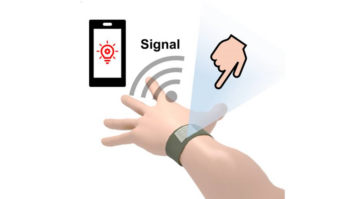 As hybrid working has become normalised in the UK, investing in collaboration technology is crucial for companies of all sizes. Yet though this technology – such as headsets, or video conferencing equipment – is used by employees at all levels, the decision to invest in it is typically made by the C-suite. Rank-and-file employees are given a limited say in the choice, at most.
As hybrid working has become normalised in the UK, investing in collaboration technology is crucial for companies of all sizes. Yet though this technology – such as headsets, or video conferencing equipment – is used by employees at all levels, the decision to invest in it is typically made by the C-suite. Rank-and-file employees are given a limited say in the choice, at most.
It’s not clear why this is. Perhaps the focus is on investing in a one size fits all solution for everyone to get used to rather than a tailored solution that suits everyone. Or perhaps it’s simply because less tech-savvy staff members are expected to adapt or render themselves redundant.
But at a time when technology is so crucial to enabling employees to work and be productive, this mode of thinking – that all staff must adapt to new tech, end-of-story – is outdated. On the contrary, a one-size-fits-all approach should not be taken when investing in enterprise technology.
This might all sound very idealistic. But the reality is that different employees have different personas, and different ways of working.
Poly has been studying workstyle evolution for nearly a decade and has identified several workplace personas that occur in professional settings – which make up 97% of the workforce:
- ‘Office communicators’ take a more traditional approach to working, often full-time in the office and using desk phones as one of their main communication methods. They tend to eschew complex AV technologies, and make up 5% of a typical enterprise workforce.
- ‘Office collaborators’ typically work in open offices while still relying heavily on remote collaboration tools. Often favouring open-plan offices, these workers comprise 16% of the average enterprise.
- ‘Remote collaborators’ spend most of their time outside the office, while still communicating heavily with colleagues. They may prefer video calls: retaining both the ability to work remotely, and a sense of face-to-face interaction. They make up 36% of a typical workforce.
- ‘Flexible workers’ work ‘on the go’ and move between locations during the same day – may prefer using their mobile device. The typical enterprise will be 21% flexible workers.
- ‘Road warriors’ spend most of their day on the go, and rely heavily on mobile and other portable technologies. 4% of the average workforce fits into this category.
- Finally, ‘connected executives’ are those who exert lots of influence within an organisation, and have many meetings each day with international clients. These people also rely heavily on video conferencing, totalling 16% of the typical workforce.
Although these terms may be unfamiliar, the types of people they describe will likely sound familiar to anyone who’s worked in a professional setting. The point is that investment in hybrid working technologies must take place with individual employees’ needs in mind.
As such, their tools should help enable them to collaborate how they see fit, instead of being restricted. Doing this will help to make a more productive and happy workforce.
EMPLOYER PERSPECTIVE
Why should all this matter from an employer’s perspective?
The first reason is that employees who lack optimal technologies to work in their preferred manner are likely to be unhappy, and could jump ship. This is particularly important as the last year has seen the “great resignation” – where employees are leaving their jobs to look for better careers. Without equipping employees with technology that meets their needs, organisations risk seeing talent walk out the door in search of jobs that can.
In fact, according to a Poly survey of business decision-makers in 16 countries, over half (56%) of organisations fear that if they don’t sort out their hybrid work plans, they’ll start losing staff and be unable to attract new talent.
The second reason is that organisations risk wasting money on tech that is underused. For example, a company might invest in cutting-edge video conferencing technology. But this might actually be a waste of money, because most of their employees happen to prefer other communication methods.
Looking at the personas above, even if we assume that connected executives and remote collaborators are dead certs to use a new firm’s video conferencing system, that still leaves nearly half (48%) of a typical enterprise who aren’t certain to use it. Or, at least, they’re not likely to be as productive if use of the new system is made mandatory.
Therefore, organisations should be diligent in working out which staff use which technologies, or risk both wasted money and unhappy staff. ‘Digital transformation’ may have been a buzzword for the last decade, but it’s not the only goal. ‘Digital adoption’ is arguably an equally big goal at many firms – that is, ensuring any shiny new technology they invest in is actually used, and used well.
To make hybrid working a long-term success, organisations need to put people at the core. Once they do this, they then need to take into consideration spaces and technology. This means, firstly, understanding employees’ personas and working styles. And then, secondly, clearly defining their future office. What spaces will be needed, and suited to their needs?
This will allow organisations to better understand their technology requirements to help the workforce become happier, and more productive. Most importantly, this will ensure everyone has an equal experience, no matter where, when or how they work. And allow everyone to reap the rewards.
When all is said and done, individual employees’ workstyles should determine investment in collaboration technology – not the other way around.







